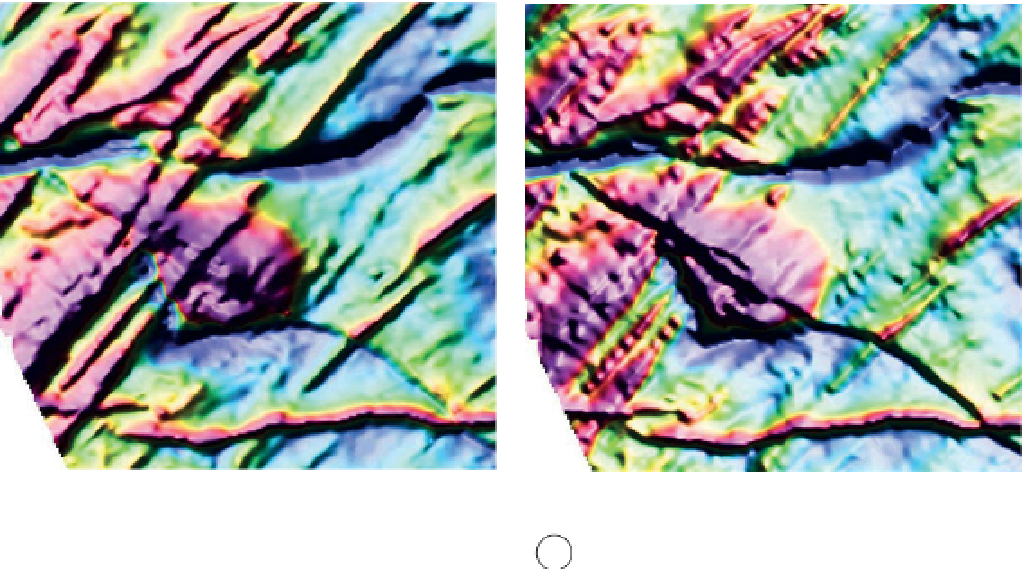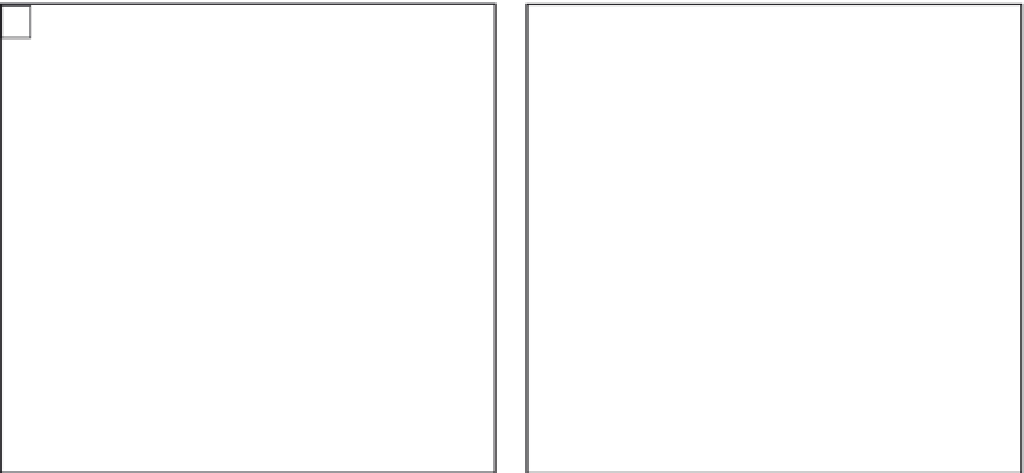Geoscience Reference
In-Depth Information
These three colour stretches are commonly used for
imaging geophysical data, although most image processing
systems allow the user to modify the stretch function in a
variety of ways. Note that the data values can also be
adjusted during data processing. For example, using the
logarithm of the data values reduces the in
uence of high
amplitude regions and raising the data to a power, such as
squaring them, increases higher values relative to lower
values (see Amplitude scaling in
Section 2.7.4.4
).
perception of shapes and objects relies heavily on resolving
areas of light and shadow (Ramachandran,
1988
).
The re
ectivity of a surface in the shaded relief enhance-
ment can be quanti
ed. The most common type is Lam-
bertian re
ectivity, where the incident light is re
ected, and
equally in all directions. The re
ectivity depends on the
orientation of each part of the
'
'
surface relative
to the position of the sun. Since the surface
topographic
'
s orientation
depends on the relative values of the neighbouring pixels,
the calculated value does not depend on individual pixels.
The calculated value is used to assign a shade of grey to
each pixel (grey-scale displays should always be used for
shaded-relief displays). A popular type of shaded relief is
the
2.8.2.3
Shaded relief
Short-wavelength variations within an image can be high-
lighted by applying a visual enhancement known as shaded
relief, also called sun shading, hill shading and artificial illu-
mination.
Figure 2.32
illustrates the spectacular improvements
obtainable with shaded-relief enhancements, shown in (e) to
(h), compared with the unshaded grey-scale display in (a).
The physical process mimicked by the shaded-relief
enhancement is sunlight illuminating topography simulated
from the grid values, i.e. higher values form the hills and
lower values form the valleys. Inclined surfaces facing the
'
. It reduces the contrast between mid-range
values and emphasises the brightness of highly illuminated
areas, making the illuminated surface appear as if it were
'
'
wet-look
'
. As shown in
Fig. 2.36b
, it is particularly
effective in highlighting subtle detail when used as part of a
composite display (see
Section 2.8.2.4
).
Shaded relief is a very useful image enhancement, but it
does have several associated drawbacks. What is perceived
as positive and negative
wet
'
or
'
glossy
'
are illuminated more than surfaces oblique to the
illumination direction. This is determined by both the dip
and strike of the surface, and means that the display has a
directional bias and acts as a form of gradient enhancement.
The enhancement
sun
'
can vary from person
to person, and also whether the illumination is from the
'
'
topography
'
of the image as displayed on the page;
compare
Fig. 2.32h
with
Figs. 2.32e
, f and g. The shaded
relief image is also subtly distorted because the illumination
top
'
or the
'
bottom
'
is effective because human visual
a)
b)
'Sun'
'Sun'
0
2
Kilometres
Figure 2.34
Illustration of the change in apparent cross-cutting relationships between anomalies for shaded relief displays with different illumination
directions. This is a composite image combining a pseudocolour display of amplitude with grey-scale shaded relief (see
Section 2.8.2.3
)
. Image
courtesy of the Geological Survey of Western Australia, Department of Mines and Petroleum. © State of Western Australia 2013.
































Search WWH ::

Custom Search